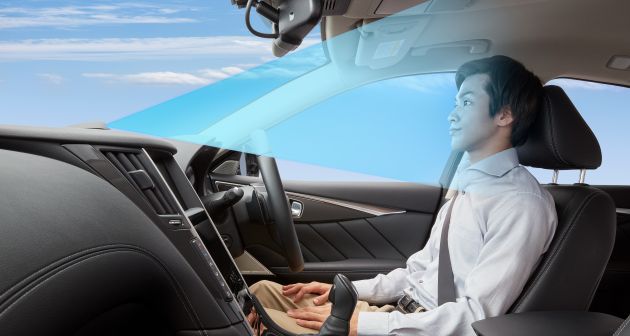Nissan rolled out its ProPilot 2.0 autonomous driving technology in Japan this month with the introduction of the facelifted Skyline. The rebadged Infiniti Q50 sports a striking GT-R-esque proboscis which, according to a new report by Automotive News Europe, has been designed to take into account the array of sensors hidden within – something that is expected to change the face of automotive styling in years to come.
Speaking at the car’s debut, senior vice president of global design Alfonso Albaisa said that the front end had to be stretched and smoothened – particularly under the headlights – to enable the sensors to read the road and obstacles ahead. “We had to change the outside because of the inside,” he said “There’s a lot of technology in the front of this thing. Especially on the cheeks. A whole bunch of things had to happen.”
Apparently, the Skyline’s lidar and other sensors require a smooth surface ahead of them to prevent the distortion of the waves being emitted and received. “What happens with a lot of these sensors is they don’t like creases, and they don’t like undercuts, because it diffracts their wavelengths,” Albaisa said.
Such practical considerations could spell the end of overtly styled exteriors that have become the norm these days. “You’ll find that on a lot of the cars coming, probably on all brands, to be honest. It prefers clean surfaces so the sensors and the lidar and everything can send out very clean waves.”
Autonomous driving technology is also expected to shape interior design in the future – Skyline models fitted with ProPilot 2.0 get an infrared camera on top of the dashboard to monitor the driver’s attention towards the road ahead. This ensures they are ready to take the wheel in case of an emergency.
-paultan


